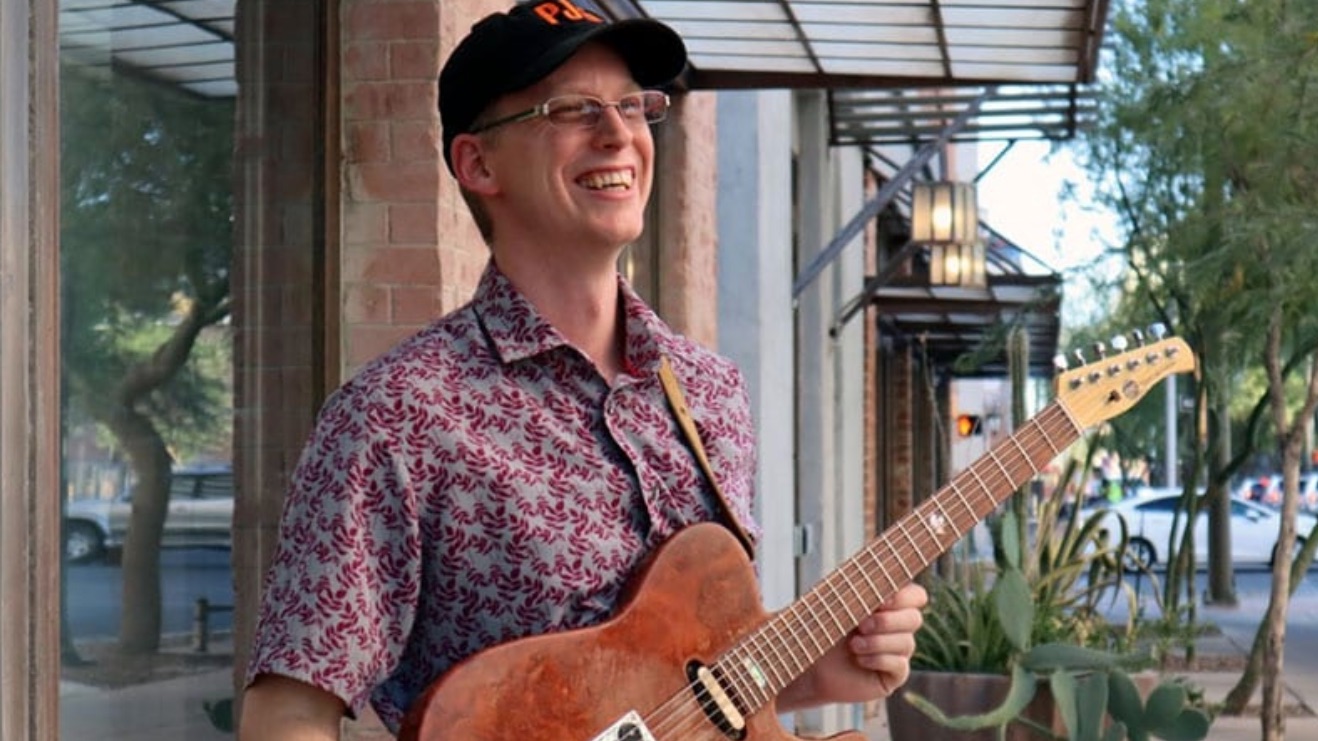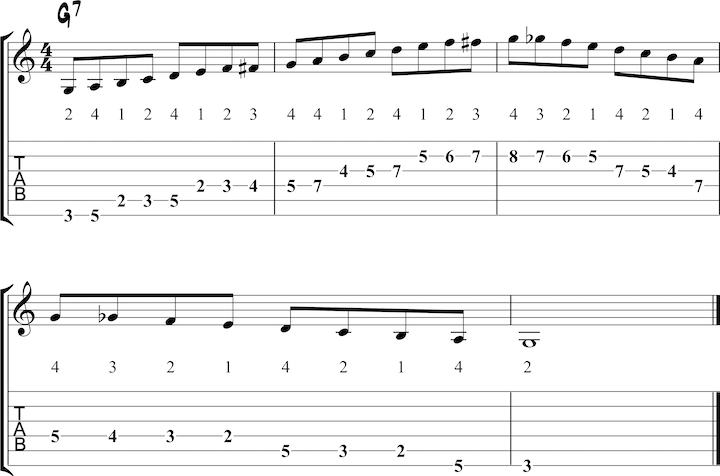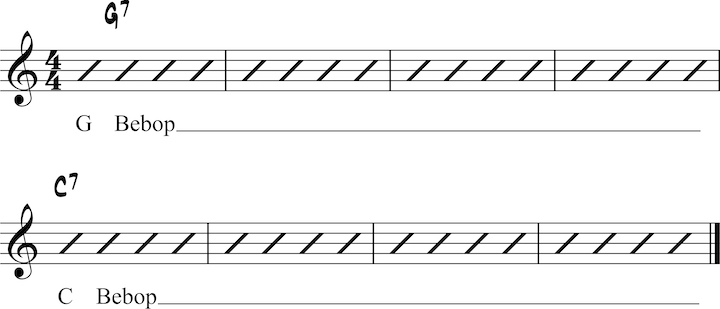Grab your guitar, dial in a fat jazz tone and explore this in-depth bebop scale lesson from six-string ace Matt Warnock
Master these scales and then head over to Matt Warnock Guitar for a free five-course Bebop Scale Essentials pack

We’re big fans of MWG Studio, led by virtuoso blues, rock, classical, jazz and fingerstyle player Matt Warnock, who has more than 25 years of experience as a teacher and performer. The interactive guitar learning platform for guitarists at all levels provides a private lesson experience – without the private lesson price tag.
Matt recently offered a free Bebop Scale Essentials course pack exclusively for Guitar World and Guitar Player readers, and now he’s back to give us even more great tips, with a free preview lesson of the material you can find in the course pack.
This lesson and pack is geared toward guitarists who play jazz, as well as those who want to explore jazz but have been hesitant in the past. Current jazzers will find new material to learn, while non-jazz players will get an easy and fun entry into jazz soloing.
The bebop scale, Matt says, “is a classic device that jazz guitarists need to have in their vocabulary. It’s a sound that non-jazzers can use to bring a chromatic, bebop vibe into their solos.”
In this lesson, he continues, “you learn my favorite bebop scale shape, a must-know arpeggio exercise, and an essential bebop scale pattern. Everything you need to get this scale onto the fretboard and into your solos with confidence and authentic vocabulary.”
So grab your guitar, dial in a fat jazz tone and have fun exploring these bebop scale workouts on your fretboard.
And with that, we’re off. Take it away, Matt.
What is the Bebop Scale?
The bebop scale is an 8-note scale that is built by adding a major 7 passing note to the Mixolydian mode. You use the bebop scale to solo over dominant 7th chords when you want to add tension and release to your lines.
From an intervallic perspective, the two scales look like this (the passing note is in brackets):
Mixolydian = 1 2 3 4 5 6 b7 1
Bebop Scale = 1 2 3 4 5 6 b7 [7] 1
In the key of G, the notes are:
G Mixolydian = G A B C D E F G
G Bebop Scale = G A B C D E F [F#] G
The added major 7th interval creates tension in your lines that you resolve up or down to the next note in the scale.
Now that you know how to build the bebop scale and use it in your solos, you’re ready to get it under your fingers and into your ears.
Bebop Scale Fingering
Here’s my favorite bebop scale shape to learn, memorize, and practice in different keys on the fretboard. The fingering is written between the tab and notation to give you a starting point with this scale shape.
Start with my fingering, then adjust to fit your hands and dexterity as needed. Play this scale shape from a G root note until memorized, then take it to other keys as you expand it across the fretboard. Sing along and name the notes and/or intervals for an added challenge.
Have fun getting to know this bebop scale shape as you build your foundation for the variations and patterns that follow.

Arpeggio Up + Scale Down

This exercise features one of the most popular bebop scale variations, arpeggio up and scale down. Here, you play a G7 arpeggio up and then the G bebop scale down as you mix these two devices in your practicing and soloing.
Start by playing this exercise in G, then take it to other keys when ready. Use a metronome to ensure you play with steady and accurate rhythms.
When ready, add the arpeggio and bebop scale to your solos over G7 and other dominant 7th chords.
“Honeysuckle” Pattern
You now explore the Honeysuckle pattern as you expand your creativity with this bebop scale shape. This pattern is based on the melody to Honeysuckle Rose by Fats Waller, hence the name.
Here, you play down the bebop scale, 8-7-b7 intervals, then up an arpeggio from the 2nd note in the scale, 2-4-6 intervals. From there, you play down the scale until you hit the next root note and repeat the phrase, 8-7-b7-2-4-6.
The Honeysuckle pattern breaks up the scale and expands your soloing vocabulary at the same time. Learn the phrase as written first, practicing in a few keys with a metronome to get it down. Then add the Honeysuckle pattern to your solos over backing tracks to hear how it sounds in the context of a jam session.

Jam Session
To finish your intro to the bebop scale, apply the scale, arpeggio and Honeysuckle pattern to a multi-key backing track.
In this jam session, you solo with the G bebop scale over G7 and the C bebop scale over C7.
Start by soloing with only the scale. Then, add the arpeggio and Honeysuckle pattern to level up your soloing lines & phrases.
Don’t worry about playing the “perfect” solo right now. Instead, explore these new sounds over the track as your hands and ears get used to soloing with these devices over chord changes.

The Next Step
The bebop scale is an essential device to learn and add to your solos when you want to bring a jazz sound to your improvised lines. It’s also a creative way to open your ears to new soloing possibilities on the fretboard. Have fun as you explore this new scale, arpeggio, and Honeysuckle pattern in your playing.
And to continue your bebop scale exploration, pick up my five-course Bebop Scale Essentials Pack.
The course pack is FREE for Guitar World and Guitar Player readers here.
Matt Warnock is the owner of www.mwgcourses.com, which has thousands of lessons, courses, & workshops designed to help creative guitarists meet their practice and performance goals.
Get The Pick Newsletter
All the latest guitar news, interviews, lessons, reviews, deals and more, direct to your inbox!
Since 1980, Guitar World has been the ultimate resource for guitarists. Whether you want to learn the techniques employed by your guitar heroes, read about their latest projects or simply need to know which guitar is the right one to buy, Guitar World is the place to look.

